 May 13, 2021 John E. Ross, KD8IDJ, Editor
| ||||||
First-Time Exam Applicants Must Obtain FCC Registration Number Before Taking Exam Beginning May 20, 2021, all amateur examination applicants will be required to provide an FCC Registration Number (FRN) to the Volunteer Examiners (VEs) before taking an amateur exam. This is
necessary due to changes the FCC has made to its licensing system. Amateur candidates who already have an FCC license, whether for amateur radio or another service, and already have an FRN may use the same number. All prospective new FCC licensees, however, will be required to obtain an FRN before the examination and provide that number to the volunteer examiners on the Form 605 license application. An FCC instructional video provides step-by-step instructions on how to obtain an FRN through the FCC's COmmission REgistration System (CORES). The FRN is required for all new applicants to take an amateur exam and is used afterward by the applicant to download the license document from the FCC Universal Licensing System (ULS), upgrade the license, apply for a vanity call sign, and to submit administrative updates (such as address and email changes) and renewal applications. In addition, after June 29, all applications will be required to contain an email address for FCC correspondence. Applicants will receive an email directly from the FCC with a link to the official electronic copy of their license whenever a license is issued or changed. ARRL VEC suggests that those without access to email should use the email address of a family member or friend. Licensees will be able to log in to the ULS using their FRN and password to download the latest version of their license at any time. The FCC no longer provides paper license documents. Wooden Satellite to Launch by Year's End The WISA Woodsat project, being sponsored by plywood supplier WISA in an unconventional PR initiative, is poised to place a wooden satellite into orbit by the end of the year. The idea is to test the suitability of treated wood as a low-cost and widely available material for space applications. The IARU posting for Woodsat indicates that several The wooden satellite is based on a basic, versatile CubeSat format, Kitsat, which is designed with educational use in mind. It retails for just $1,500. Based in Finland, the Woodsat project began with students across the country contributing parts to a CubeSat launched by balloon. The satellite will be a 10-centimeter cube weighing 1 kilogram, covered on all sides by coated birch plywood from WISA Plywood. Nine small solar cells will power the satellite, which will orbit at an altitude of 500 - 550 kilometers. As the sponsor explained, "WISA Woodsat will go where no wood has gone before. With a mission to gather data on the behavior and durability of plywood over an extended period in the harsh temperatures, vacuum, and radiation of space in order to assess the use of wood materials in space structures." Once in orbit, Woodsat will be able to extend a selfie stick to capture photographs of the wooden box as it hurtles through space at 40,000 kilometers (24,800 miles) per hour. This will allow the mission leaders to monitor the impact of the environment on the plywood. The satellite would downlink its telemetry and images from two cameras using amateur radio frequencies. "The wooden satellite with a selfie stick will surely bring laughter and goodwill," added mission manager Jari Mäkinen of Arctic Astronautics. "Essentially, this is a serious science and technology endeavor. In addition to testing plywood, the satellite will demonstrate accessible radio amateur satellite communication; host several secondary technology experiments; validate the Kitsat platform in orbit, and popularize space technology." An April 23 Engineering and Technology article has more information. -- Thanks to AMSAT News Service via JoAnne Maenpaa, K9JKM; E&T, and the IARU ARRL Podcasts Schedule
The On the Air and Eclectic Tech podcasts are sponsored by Icom. Both podcasts are available on iTunes (iOS) and Stitcher (Android), as well as on Blubrry -- On the Air | Eclectic Tech. April 2021 Volunteer Monitor Program Report Released The Volunteer Monitor (VM) Program is a joint initiative between ARRL and the FCC to enhance compliance in the Amateur Radio Service. A General-class renewal applicant withdrew his application after FCC notice that the renewal application would be held up pending review of Twenty-one operators in 14 states received Advisories because of their operation in the March CQ World Wide DX Contest. While making contacts with VC3T and VC2W, their LSB signals extended below 7.125 MHz, which is the lower limit of the 40-meter amateur phone band. Volunteer Monitors participated in a nationwide training program on April 7 that was conducted by ARRL and the FCC. The Volunteer Monitor Coordinator had two meetings in April with FCC Enforcement Bureau personnel. The totals for VM monitoring in March were 1,394 hours on HF frequencies and 2,515 hours on VHF and above frequencies. -- Thanks to Volunteer Monitor Coordinator Riley Hollingsworth, K4ZDH AMSAT's GOLF-TEE CubeSat Manifested for Launch GOLF-TEE -- the first satellite in AMSAT's "Greater Orbit, Larger Footprint" (GOLF) program -- has been put on the manifest for NASA's Educational Launch of Nanosatellites (ELaNa) mission 46. AMSAT says the goal of the GOLF program is to work by steps through a series of increasingly capable spacecraft in learning to develop systems and skills needed to achieve successful high-orbit missions. Among these are active attitude control and the ability to command attitude changes, deployable/steerable solar panels, "The eventual goal of the GOLF program is a satellite in highly elliptical orbit (HEO) similar to AO-10, AO-13, and AO-40, but at an affordable cost, combined with significantly enhanced capabilities, allowing the use of much less complex ground stations," AMSAT said. GOLF-TEE will be a fully-functional low-Earth-orbit VHF/UHF amateur satellite, carrying a linear transponder similar to the one flown on AO-109. The "TEE" in GOLF-TEE stands for "Technology Exploration Environment." It reflects GOLF-TEE's mission of testing two primary systems needed for higher orbits. First, an attitude determination and control (ADAC) system will be tested to allow active pointing of the satellite's antennas, which will have significant gain. The other primary goal of GOLF-TEE is to gain initial orbit and space radiation exposure for radiation event-induced fault tolerant systems designed using off-the-shelf components. GOLF-TEE will carry an integrated housekeeping unit (IHU)/command transceiver designed using the Hercules line of ARM architecture-based microcontrollers. GOLF-TEE will also evaluate a low-cost, deployable, fixed attitude, solar panel array design as part of AMSAT Engineering's exploration of fixed panel arrays that allow for outfitting a variable number of "wings" in order to best match the power requirements of various CubeSat missions. Additionally, GOLF-TEE will carry a modified commercial software-defined radio (SDR), the Ettus E310, as an experimental package to test a high-speed 10 GHz data downlink. Donations to the AMSAT GOLF program are welcome. -- Thanks to AMSAT PSAT2 (NO-104) Satellite VHF Transceiver is Alive with Innovative Mode Bob Bruninga, WB4APR, says the PSAT2 VHF transceiver awoke from an 8-month slumber on April 26. "We have no idea why. Its telemetry looks fine," Bruninga said. Voltage is between 6.2 and 7.0 V and exterior temperatures are between -18° and 22° C. PSAT2 will not be in Automatic Packet Reporting System (APRS) mode, but in a brand-new experimental mode for dual-tone multi-frequency (DTMF) uplink (145.980 MHz) and "You pre-load your grid and call sign into a 16-digit DTMF memory in your radio, and when the satellite hears this it will assign a QSO number and QSL the grid by voice and then generate an APRS packet," Bruninga explained. There's even a way to send back a DTMF QSL, so you can make it a two-way DTMF contact. Successful DTMF grids and messages will appear on a special URL on the PSAT2 page. To QSL, key in that station's 2-digit QSL number and then dump your pre-loaded QSL DTMF message. Bruninga adds, "Read the docs and be sure you know what you are doing." A PSAT2 Users Operations Manual is available on the PSAT2 web page. -- Thanks to AMSAT News Service via Bob Bruninga, WB4APR ARRL Learning Network Webinars
W1AW Antenna Farm -- W1AW Station Manager Joe Carcia, NJ1Q / Tuesday, May 18, at 1 PM EDT (1700 UTC) Experience a bird's-eye view and description of the antennas used by W1AW for the station's scheduled transmissions and visiting operator activity. All the antennas used at W1AW are single-band Yagis. Viewers will also see the 5 GHz sector antennas that are part of W1AW's AREDN system. This Learning Network presentation is sponsored by Icom. Ask the Lab: How ARRL's Technical Information Service Can Help You -- ARRL Laboratory Manager Ed Hare, W1RFI / Tuesday, June 8, at 1 PM EDT (1700 UTC) Learn all about the ARRL Technical Information Service (TIS) and the expert ARRL Laboratory staff who answer thousands of questions each year from members. Get tips about projects, suggestions to address various station installations, and help for some of your most pressing ham radio questions. You'll discover how to search ARRL's extensive Periodicals Archive, find helpful articles, read test reports, access technical forums, and find answers to technical questions. This Learning Network presentation is sponsored by PreppComm. ARRL members may register for upcoming presentations and view previously recorded Learning Network webinars. ARRL-affiliated radio clubs may also use the recordings as presentations for club meetings, mentoring new and current hams, and discussing amateur radio topics. The ARRL Learning Network schedule is subject to change. Intrepid-DX Group Adds Second Physician for Trip to "Cold and Inhospitable" Bouvet Island "Bouvet is like the Mount Everest of DXCC entities," 3Y0J DXpedition co-leader Paul Ewing, N6PSE, said. "It is among the most challenging entities to activate due to significant transportation costs and personal sacrifices required by the team to make the 42-day round trip. Fortunately, Bouvet is not our first mountain." The DXpedition's website Ewing announced recently that Mike Crownover, AB5EB, a veteran emergency room physician, has joined the 3Y0J DXpedition team to pair with ER doctor Bill Straw, KO7SS. The DXpedition is set for January - February 2023, but the planning stage to activate the second-most-wanted DXCC entity is well under way, with the team researching polar-quality tents and equipment and discussing antenna specifications with various manufacturers. "We will make careful choices to help us meet the demand for Bouvet contacts," Ewing said. The 3Y0J team has set a goal of making at least 100,000 contacts from Bouvet. "3Y0J will be a DXpedition with a focus on good, fast, and accurate operating. QSO rates will be very high," Ewing said. "We have assembled a team of strong operators who will strive to work everyone. We will focus on CW/SSB/digital for the 10 - 160 meter bands. Our goal is to match our VP8STI/VP8SGI achievement with 135,000 contacts made." Ewing said that in the later stages of the DXpedition, operators will use No real-time log search will be available, but 3Y0J will upload to Club Log and to M0OXO Log Search each day, Ewing said. The DXpedition has an estimated budget of $764,000, with each team member contributing a minimum of $20,000 each. In April, ARRL awarded a Colvin Grant of $5,000 to the Intrepid-DX Group to help in funding the 3Y0J DXpedition. Ewing and ARRL member Ken Opskar, LA7GIA, will share DXpedition leadership duties. Follow the DXpedition plans from the DXpedition website and Facebook page. Amateur Radio in the News ARRL Public Information Officers, Coordinators, and many other member-volunteers help keep amateur radio and ARRL in the news.
Share any amateur radio media hits you spot with us. In Brief...
Announcements
The K7RA Solar Update Tad Cook, K7RA, Seattle, reports: Sunspot activity returned last Friday and has held steady since. Average daily sunspot numbers rose from 11.9 to 21.1, and average daily solar flux was up 2.1 points to 74.3.
The planetary A index rose to 41, far above an average of 3.8 on the previous 6 days. The average daily planetary A index for the May 6 - 12 reporting week was 9.1, and average middle-latitude A index was 7.4. Predicted solar flux over the next month is 76 and 78 on May 13 - 14; 80 on May 15 - 18; 78 and 77 on May 19 - 20; 79 on May 21 - 22; 80, 79, 78, 77, and 73 on May 23 - 27; 72 on May 28 - 30; 70 on May 31 - June 1; 71 and 75 on June 2 - 3; 76 on June 4 - 5; 74 on June 6 - 7; 75 on June 8 - 9; 77 on June 10, and 79 on June 11 - 13. Predicted planetary A index is 22 and 10 on May 13 - 14; 5 on May 15 - 16; 16, 14, 8, 10, and 8 on May 17 - 21; 5 on May 22 - June 5; 8, 5, and 8 on June 6 - 8, and 8, 5, 12, and 18 on June 9 - 12. Electronics Notes included an item recently about Using Sporadic E, Es Propagation for Amateur Radio. Also check out this useful online sporadic E tool. Sunspot numbers for May 6 - 12 were 0, 15, 17, 18, 36, 31 and 31, with a mean of 21.1. The 10.7-centimeter flux was 70.8, 74.5, 71.6, 75.9, 76.5, 76.1, and 74.7, with a mean of 74.3. Estimated planetary A indices were 4, 3, 3, 4, 6, 3, and 41, with a mean of 9.1. Middle latitude A index was 2, 3, 4, 6, 8, 4, and 25, with a mean of 7.4. A comprehensive K7RA Solar Update is posted Fridays on the ARRL website. For more information concerning radio propagation, visit the ARRL Technical Information Service, read "What the Numbers Mean...," and check out K9LA's Propagation Page. A propagation bulletin archive is available. For customizable propagation charts, visit the VOACAP Online for Ham Radio website. Share your reports and observations. Just Ahead in Radiosport
Upcoming ARRL Section, State, and Division Conventions Many conventions and hamfests have been canceled or postponed due to the coronavirus pandemic. Check the calendar of canceled events on the ARRL website.
Find conventions and hamfests in your area.
ARRL -- Your One-Stop Resource for . .
Subscribe to...
Free of charge to ARRL members...
| ||||||
.jpg)
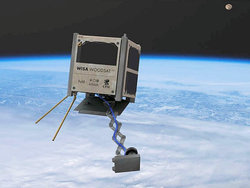 amateur radio experiments will be on board as well as photo downlinking, including selfies.
amateur radio experiments will be on board as well as photo downlinking, including selfies..jpg) The latest episode of the On the Air podcast (Episode 17) is a discussion with Ward Silver, N0AX, of the importance of station grounding.
The latest episode of the On the Air podcast (Episode 17) is a discussion with Ward Silver, N0AX, of the importance of station grounding..jpg) The latest episode of Eclectic Tech (Episode 33), features W1AW Station Manager Joe Carcia, NJ1Q, diagnosing and treating several troublesome "patients" at ham radio's most famous station.
The latest episode of Eclectic Tech (Episode 33), features W1AW Station Manager Joe Carcia, NJ1Q, diagnosing and treating several troublesome "patients" at ham radio's most famous station.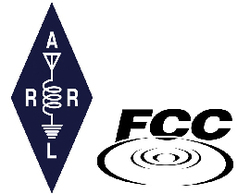 Volunteer Monitor complaints. As a consequence, the Quakertown, Pennsylvania, applicant has no operating privileges.
Volunteer Monitor complaints. As a consequence, the Quakertown, Pennsylvania, applicant has no operating privileges.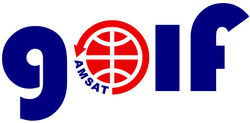 radiation tolerance for commercial, off-the-shelf components in higher orbits, and propulsion.
radiation tolerance for commercial, off-the-shelf components in higher orbits, and propulsion..jpg) voice downlink.
voice downlink.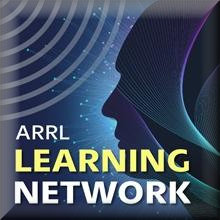 Visit the
Visit the .jpg)

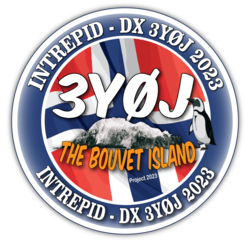 describes Bouvet as, "a cold and inhospitable place." At 54° S, Bouvet Island, a sub-Antarctic island in the South Atlantic and a dependency of Norway, is the most remote place on Earth.
describes Bouvet as, "a cold and inhospitable place." At 54° S, Bouvet Island, a sub-Antarctic island in the South Atlantic and a dependency of Norway, is the most remote place on Earth..jpg) "proven techniques" to work the weakest of callers. "We will also use techniques to work the youth in our audience," he added.
"proven techniques" to work the weakest of callers. "We will also use techniques to work the youth in our audience," he added..jpg) The Amateur Radio Legal Defense and Assistance Committee (
The Amateur Radio Legal Defense and Assistance Committee (.jpg) Radio Frequency Interference Seminar Set for May 19 via Zoom ARRL Laboratory Manager Ed Hare, W1RFI, will hold a Radio Frequency Interference (RFI) seminar via Zoom on Wednesday, May 19, at 2000 UTC. His 30-minute slide presentation offers an overview of politics, personalities, and technical issues involved in electromagnetic interference (EMI) control, as well as causes and cures. A question-and-answer session will follow the slide presentation. The IEEE EMC Society is sponsoring the event. The link
Radio Frequency Interference Seminar Set for May 19 via Zoom ARRL Laboratory Manager Ed Hare, W1RFI, will hold a Radio Frequency Interference (RFI) seminar via Zoom on Wednesday, May 19, at 2000 UTC. His 30-minute slide presentation offers an overview of politics, personalities, and technical issues involved in electromagnetic interference (EMI) control, as well as causes and cures. A question-and-answer session will follow the slide presentation. The IEEE EMC Society is sponsoring the event. The link 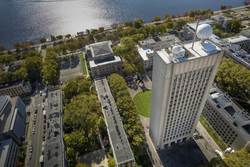 The MIT UHF Repeater Association W1XM shack and radome have been saved. After a years-long process involving countless hours of meeting, writing, negotiating, and planning across half a dozen entities within MIT, and after an intense, large-scale fundraising campaign to save the MITURA shack and radome atop the Green Building Roof on campus, the club will get to keep and improve W1XM
The MIT UHF Repeater Association W1XM shack and radome have been saved. After a years-long process involving countless hours of meeting, writing, negotiating, and planning across half a dozen entities within MIT, and after an intense, large-scale fundraising campaign to save the MITURA shack and radome atop the Green Building Roof on campus, the club will get to keep and improve W1XM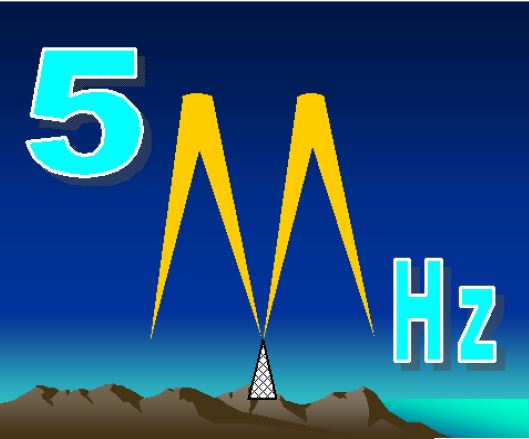 Hams in New Zealand again have access to 60 meters. The New Zealand Association of Radio Transmitters (NZART) announced recently that negotiations with regulator RSM were successful in accommodating 60-meter operation for New Zealand radio amateurs. Following the end of the two-channel 60-meter "trial" in New Zealand during 2020, hams there will now have access to a WRC-15 Amateur Secondary Allocation of 5351.5 - 5366.5 kHz with a maximum allowable power of 15 W EIRP (about 9.14 W) by applying for a
Hams in New Zealand again have access to 60 meters. The New Zealand Association of Radio Transmitters (NZART) announced recently that negotiations with regulator RSM were successful in accommodating 60-meter operation for New Zealand radio amateurs. Following the end of the two-channel 60-meter "trial" in New Zealand during 2020, hams there will now have access to a WRC-15 Amateur Secondary Allocation of 5351.5 - 5366.5 kHz with a maximum allowable power of 15 W EIRP (about 9.14 W) by applying for a  A Very High Speed Club special event is active during May. Special event call sign
A Very High Speed Club special event is active during May. Special event call sign  The W4DXCC DX and Contest Convention is set for September 24 - 25 in Pigeon Forge, Tennessee. Anyone planning to attend is urged to register now. Call the hotel at (865) 428-8350 and indicate that you are attending W4DXCC by SEDCO to get a special room rate. (No online hotel reservations available.)
The W4DXCC DX and Contest Convention is set for September 24 - 25 in Pigeon Forge, Tennessee. Anyone planning to attend is urged to register now. Call the hotel at (865) 428-8350 and indicate that you are attending W4DXCC by SEDCO to get a special room rate. (No online hotel reservations available.) 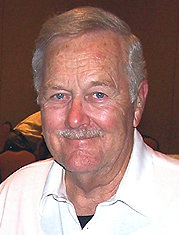 ARRL Life Member Lynn Lamb, W4NL, of Maryville, Tennessee, died on May 10 following a lengthy illness. He was 83. Lamb co-founded SEDCO W4DXCC DX and Contest Convention in 2005. Licensed in 1954, Lamb retired from a career with the US Department of Defense (US Navy and Air Force). He was a founding member of the National Capitol DX Association (NCDXA) and belonged to Potomac Valley Radio Club, the International DX Association, and other amateur radio organizations. He was 339/371 in the DXCC standings. Lamb was a member of the CQ DX and University of Tennessee Amateur Radio Club Halls of Fame. Survivors include his wife Rosie, KA4S. A memorial service will be held at a later date.
ARRL Life Member Lynn Lamb, W4NL, of Maryville, Tennessee, died on May 10 following a lengthy illness. He was 83. Lamb co-founded SEDCO W4DXCC DX and Contest Convention in 2005. Licensed in 1954, Lamb retired from a career with the US Department of Defense (US Navy and Air Force). He was a founding member of the National Capitol DX Association (NCDXA) and belonged to Potomac Valley Radio Club, the International DX Association, and other amateur radio organizations. He was 339/371 in the DXCC standings. Lamb was a member of the CQ DX and University of Tennessee Amateur Radio Club Halls of Fame. Survivors include his wife Rosie, KA4S. A memorial service will be held at a later date.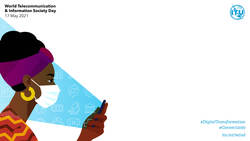 The theme for World Telecommunication and Information Society Day (
The theme for World Telecommunication and Information Society Day (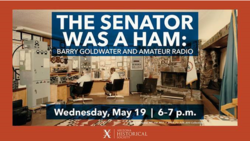 A virtual event, "The Senator was a Ham: Barry Goldwater and Amateur Radio," will take place Wednesday, May 19, 1800 - 1900 Arizona/Pacific Time.
A virtual event, "The Senator was a Ham: Barry Goldwater and Amateur Radio," will take place Wednesday, May 19, 1800 - 1900 Arizona/Pacific Time. 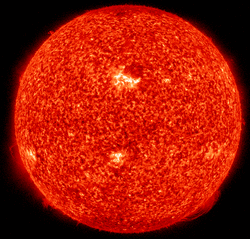 Geomagnetic activity was quiet until Wednesday, when the planetary A index went to 41, as the result of a coronal mass ejection (CME) that blasted out of the sun on May 9. It was not expected to be very strong, but when it struck on May 12 it sparked a G3-class geomagnetic storm -- the strongest in the current solar cycle.
Geomagnetic activity was quiet until Wednesday, when the planetary A index went to 41, as the result of a coronal mass ejection (CME) that blasted out of the sun on May 9. It was not expected to be very strong, but when it struck on May 12 it sparked a G3-class geomagnetic storm -- the strongest in the current solar cycle..jpg)








